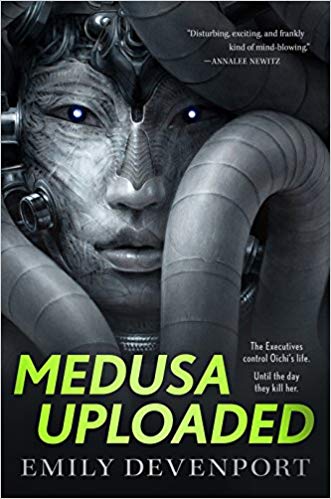 Medusa Uploaded (The Medusa Cycle, #1) by Emily Devenport
Medusa Uploaded (The Medusa Cycle, #1) by Emily Devenport Format: ebook
Source: purchased from Amazon
Formats available: paperback, ebook, audiobook
Genres: science fiction
Series: Medusa Cycle #1
Pages: 317
Published by Tor Books on May 1, 2018
Purchasing Info: Author's Website, Publisher's Website, Amazon, Barnes & Noble, Kobo, Bookshop.org
Goodreads
The Executives control Oichi’s senses, her voice, her life. Until the day they kill her.
An executive clan gives the order to shoot Oichi out of an airlock on suspicion of being an insurgent. A sentient AI, a Medusa unit, rescues Oichi and begins to teach her the truth—the Executives are not who they think they are. Oichi, officially dead and now bonded to the Medusa unit, sees a chance to make a better life for everyone on board.
As she sets things right one assassination at a time, Oichi becomes the very insurgent the Executives feared, and in the process uncovers the shocking truth behind the generation starship that is their home.
My Review:
If The Forever Watch by David Ramirez, The Moon is a Harsh Mistress by Robert A. Heinlein and The Murderbot Diaries by Martha Wells got together in a line marriage of the kind that Heinlein posited on Moon, the child they produced would be Medusa Uploaded.
A child that will absolutely stun you in speechless gibbering as well as afflict you with a terribly terrific case of book hangover.
This is also one of those stories where you reach the end, and, just like the main character, discover that none of the things that you thought you knew at the beginning are remotely as they appeared to be. Hence the being stunned.
I started out thinking of The Forever Watch because both take place on generation ships. In both stories, the population of the ship has left homeworld, which may or may not be Earth, in search of a new planet.
But whatever dreams of utopia the builders had at the beginning, those dreams have been long subverted by the time the story opens.
Our point of view character in Medusa Uploaded is Oichi Angelis, and she sees herself as a Worm. In fact, she sees almost all of the population of the Olympia as Worms. Most people are, like Oichi, members of the Servant class who are programmed by the Executives not merely to serve their every whim but also to see and hear only what the Executives allow them to.
Oichi has broken her programming. Much like Murderbot, she has illicit caches of forbidden entertainment stored in her brain, and that subversive data is how she keeps herself sane – at least until one scared and spoiled Executive arranges for Oichi’s execution. Because anyone in the Executive class can. Because victimizing someone else lets them feel less like a victim themselves.
But when Oichi is literally shoved out an airlock, she is saved. Not by a deux ex machina, but by an actual machine – and that’s when her journey really begins.
Because Oichi, with the help of Medusa, sets out to enact a revolution. She pushes people around like pawns in order to bring about a rebellion where the Executive class can be overthrown and the Worms can finally have an equal voice on the ship. It’s not just that the needs of the many outweigh the needs of the few, but that Oichi becomes the one who decides which are which.
Along the way, Oichi becomes an even more efficient killing machine than Murderbot ever was.
Oichi thinks she is running her own deadly show – only to discover that she’s been part of someone else’s game all along.
Escape Rating A+: First, I need to send a HUGE thank you to the person who recommended both The Last Sun and Medusa Uploaded, because both books have been absolutely stellar.
Above, I cited three books that Medusa Uploaded really, really reminded me of. The Forever Watch feels fairly obvious, as both are stories about generation ships in mid-journey, where one of the functionaries/passengers discovers that things have gone really, really wrong – and makes the mistake of trying to fix those things. These are also both stories where most of the assumptions that the protagonists make, and that we as readers follow along with, turn out not to be true – with catastrophic results.
Murderbot may feel like a strange choice, or like I’m just trying to get on the Murderbot bandwagon – not that Murderbot wouldn’t be utterly appalled that it even has a bandwagon. But at the very beginning of both stories we have a first-person protagonist who is aware that they are supposed to be programmed into certain behaviors and that they have subverted their programming. They both spend much of the story pretending to be what everyone around them believes they are while secretly exploring a database of forbidden entertainment. Entertainment which just adds to the subversive nature of their performance.
And last but definitely not least, the SF classic The Moon is a Harsh Mistress. (Which is still quite readable!) Both Moon and Medusa are stories where the downtrodden masses are forced to remain downtrodden due to structural inequities built into the systems that keep them virtually enslaved. And in both stories they rise up anyway, using the technology that is supposed to keep them under the thumb of the ruling class. Both stories also feature machines-as-people who integrate with the revolutionaries. (The scene at the end of Moon where Manny discovers that Mike is dead still makes me cry.)
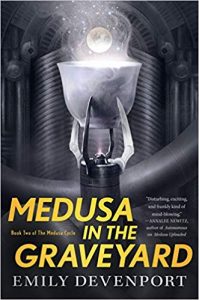 Back to the list I began earlier…
Back to the list I began earlier…
Second, I confess that Medusa Uploaded is one of the few times where I’ve been so completely into a book that I experienced the approach/avoidance conflict of desperately wanting to know how it ended while simultaneously not wanting to finish and be forced to step out of this world.
I’m really glad that there’s a second book in the cycle (Medusa in the Graveyard), and extra happy that I already have the eARC. This is one that just isn’t going to wait!

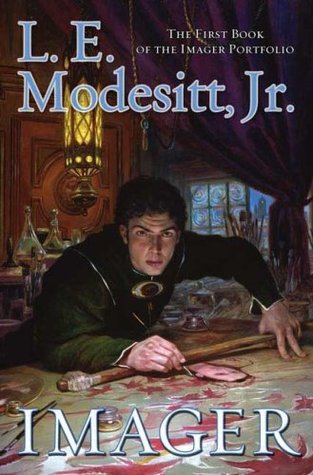 Imager (Imager Portfolio, #1) by
Imager (Imager Portfolio, #1) by 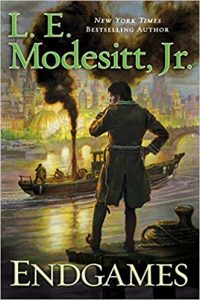 This was a re-read for me. I first read Imager when it originally came out in 2009 because the cataloger in the next office was cataloging it and said it looked good. He was right. In fact, he was so right that I continued to read the series over the next decade. I finished the current final book in the series,
This was a re-read for me. I first read Imager when it originally came out in 2009 because the cataloger in the next office was cataloging it and said it looked good. He was right. In fact, he was so right that I continued to read the series over the next decade. I finished the current final book in the series, 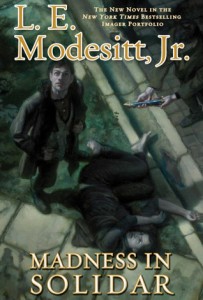 Within the opening chapters of Imager, I was both pleased to learn that the earlier history of Terahnar, and the country of Solidar, was anticipated from the beginning. Rhenn tours the Council Chateau with his father, and sees portraits of both Rex Regis, the man who becomes Rex in the Quaeryt Quintet, and Rex Defou, the Rex who is overthrown in
Within the opening chapters of Imager, I was both pleased to learn that the earlier history of Terahnar, and the country of Solidar, was anticipated from the beginning. Rhenn tours the Council Chateau with his father, and sees portraits of both Rex Regis, the man who becomes Rex in the Quaeryt Quintet, and Rex Defou, the Rex who is overthrown in 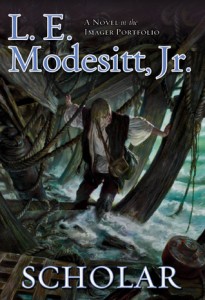 As much as I wanted to slap his mother silly, it’s Rhenn’s story that I came to see. Or rather hear. It does feel like it fits in its proper place in this history, and follows very well after finishing Endgames.
As much as I wanted to slap his mother silly, it’s Rhenn’s story that I came to see. Or rather hear. It does feel like it fits in its proper place in this history, and follows very well after finishing Endgames.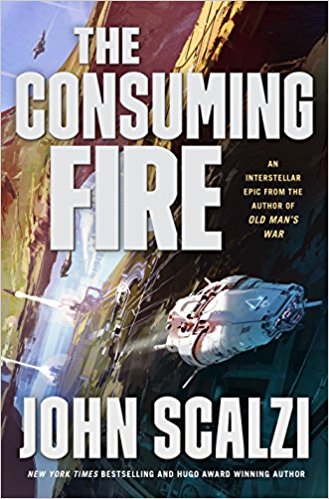 The Consuming Fire (The Interdependency #2) by
The Consuming Fire (The Interdependency #2) by  But it isn’t. The Flow is collapsing – hence the title of the first book in the series,
But it isn’t. The Flow is collapsing – hence the title of the first book in the series, 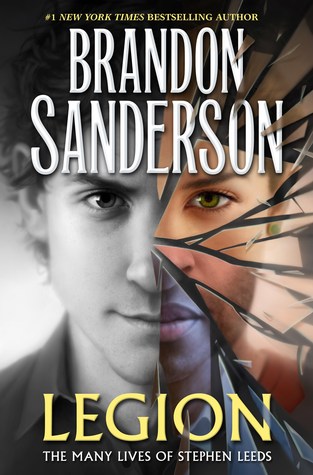 Legion: The Many Lives of Stephen Leeds (Legion, #1-3) by
Legion: The Many Lives of Stephen Leeds (Legion, #1-3) by 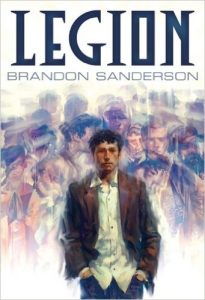 I’ve already read (actually had read to me) the first two
I’ve already read (actually had read to me) the first two 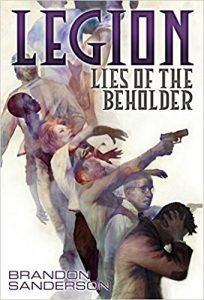 As Lies of the Beholder opens, he’s losing his aspects. Some of them just leave, but some of them go insane and kill some of the others. It feels like he’s losing bits of himself – only because he is.
As Lies of the Beholder opens, he’s losing his aspects. Some of them just leave, but some of them go insane and kill some of the others. It feels like he’s losing bits of himself – only because he is.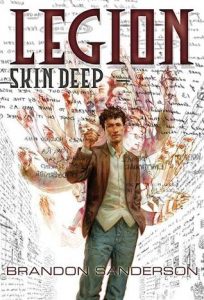 But where the other two stories were both interesting cases that Leeds’ has to solve, they were also stories about him coping with the world in a way that was comfortable for him but didn’t make him grow. Looking back, in those stories he is so comfortable with the life that he has arranged for himself that he doesn’t need to grow or change. While he doesn’t completely love his life as it is, it has certainly become comfortable and easy for him.
But where the other two stories were both interesting cases that Leeds’ has to solve, they were also stories about him coping with the world in a way that was comfortable for him but didn’t make him grow. Looking back, in those stories he is so comfortable with the life that he has arranged for himself that he doesn’t need to grow or change. While he doesn’t completely love his life as it is, it has certainly become comfortable and easy for him. What Makes This Book So Great by Jo Walton
What Makes This Book So Great by Jo Walton An Informal History of the Hugos by Jo Walton
An Informal History of the Hugos by Jo Walton If you read and loved
If you read and loved 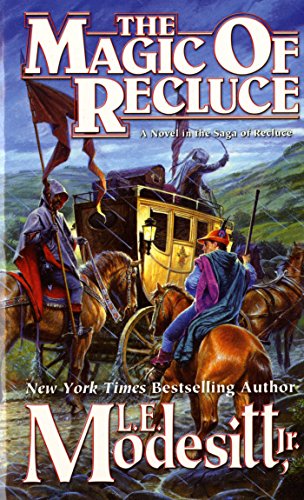 The Magic of Recluce (The Saga of Recluce #1) by
The Magic of Recluce (The Saga of Recluce #1) by 
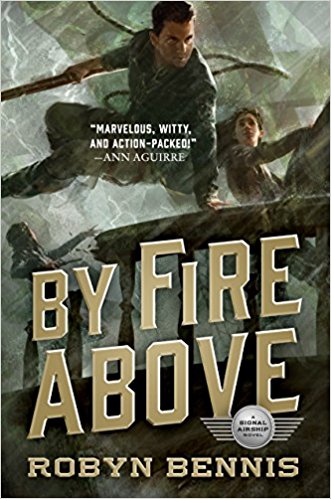 By Fire Above (Signal Airship, #2) by
By Fire Above (Signal Airship, #2) by  By Fire Above is the direct sequel to last year’s absolutely awesome
By Fire Above is the direct sequel to last year’s absolutely awesome 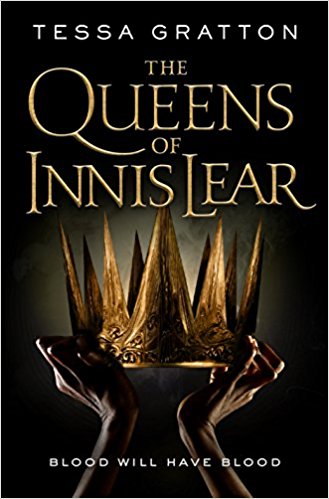 The Queens of Innis Lear by
The Queens of Innis Lear by 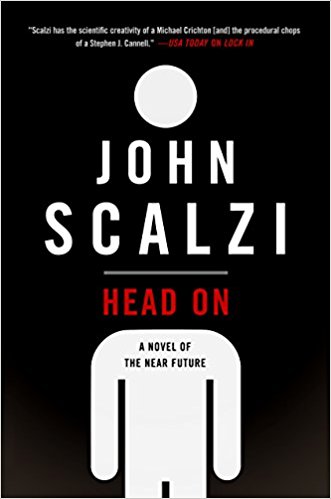 Head On (Lock In, #2) by
Head On (Lock In, #2) by  Head On is the sequel to 2014’s utterly marvelous
Head On is the sequel to 2014’s utterly marvelous  Escape Rating A: I read this on a plane ride from DC to Atlanta. And I read it early relative to its publication date, because I just couldn’t resist the treat any longer. No pun intended, it made the trip absolutely fly by. I’m just sorry that I can’t read it again for the first time – it was just that good.
Escape Rating A: I read this on a plane ride from DC to Atlanta. And I read it early relative to its publication date, because I just couldn’t resist the treat any longer. No pun intended, it made the trip absolutely fly by. I’m just sorry that I can’t read it again for the first time – it was just that good.
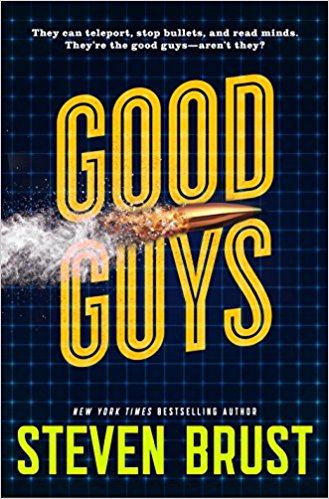 Good Guys by
Good Guys by